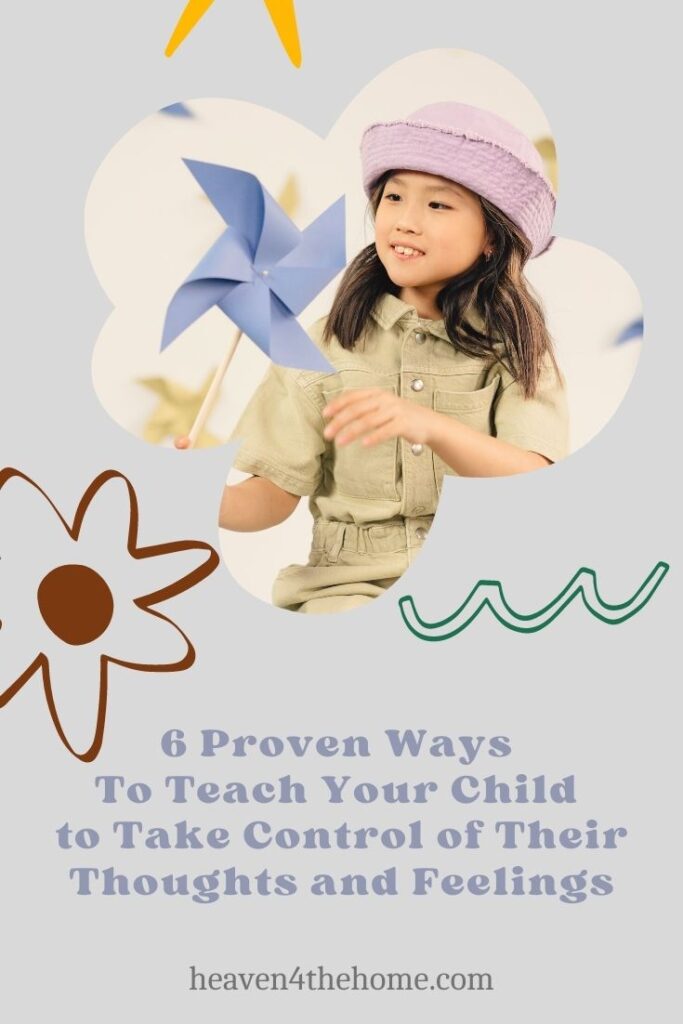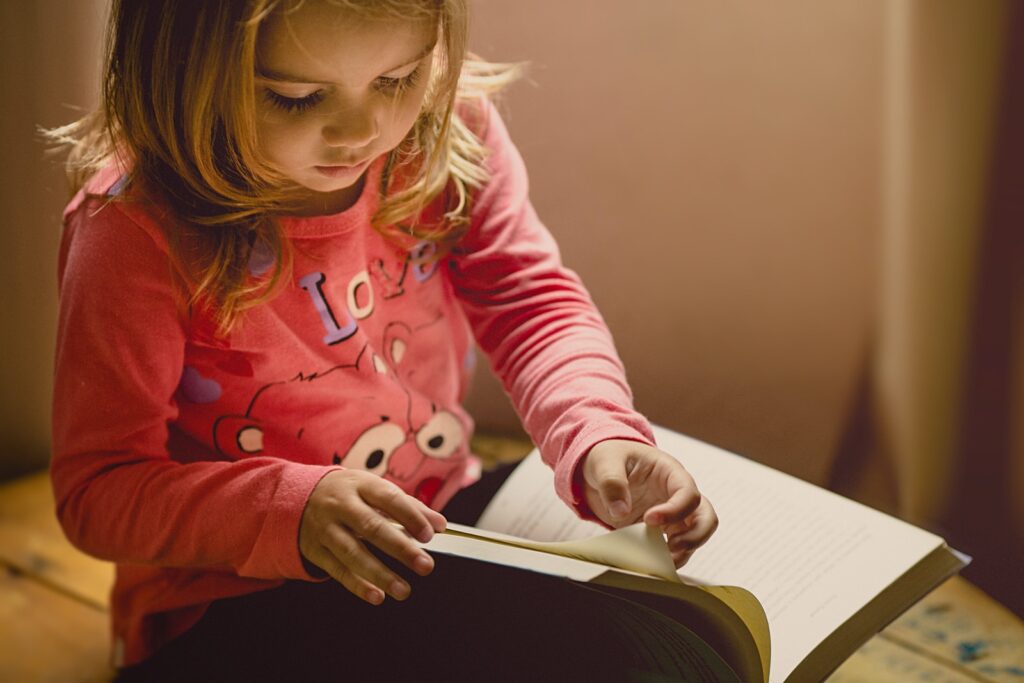As parents, we want our children to be happy and successful. We do a lot in order to provide them with a good start in life. However, do we pay the same attention to what is happening on their inside heart and mind? The state of our children’s inner life determines the quality of their outer experiences, so in order for our children to develop inner strength and emotional maturity, we must first begin by teaching them how to control their thoughts and emotions on the inside.

Why Is It Important for Parents to Teach Children to Control Their Thoughts and Emotions?
The ability to control our thoughts and emotions is a major key to success and happiness in life. Emotional self regulation begins early in childhood and those who don’t develop this skill often struggle into adulthood. Our thoughts determine our feelings, and our feelings determine our behaviour, which then form our reality.
Improving Emotional Intelligence (EQ) matters as much as IQ and is linked with better social relationships, improved academic performance, and overall mental health.
Furthermore, children who cannot control their thoughts and emotions are more likely to experience anxiety, depression, and other mental health disorders later on in life.
Children tend to ruminate on hurtful events, which keeps the negative emotions alive. When not processed healthily, children can begin to internalize harmful or hurtful events as being caused by themselves or their own actions, which may affect their identity formation.
They can then act according to these negative preconceptions about themselves, and a vicious cycle of negative self-fulfilling prophecies develops; producing a host of other issues.
It is essential then that we teach our children how to control their thoughts and emotions in a constructive way and to talk about them openly without any shame or guilt.
How to Teach Your Children To Take Control of Their Thoughts and Emotions
There are a few simple things you can do to help your child to start taking back control of their thoughts and emotions. These can be done in any order, but it is useful to walk your child through these steps:
Tip 1#: Teach Them to Understand What Thoughts Are
Firstly, our children have to understand what thoughts actually are — that thoughts are actually just thoughts!
Thoughts are simply ideas entering our minds that may or may not be true, and that we have the power in deciding whether to focus on them or not.
We must let our children know that their thoughts are not who they are, and that merely thinking a negative thought does not make them a horrible person.
This is actually liberating because some children are more prone to self-defeating thoughts than others, but by teaching that thoughts are separate from who they are, you can help them to understand what they are feeling and to recognise when they’re dealing with negative thoughts.
Tip #2: Teach Them to be Aware of Their Thoughts and Feelings
Secondly, helping our children to be aware of their thoughts is a good way to help control them.
We can explain that we may all have different types of thoughts; some good, some bad, but what’s more important is to learn how to deal with each thought as they come, and to choose to dwell on the good ones.
Children can be inarticulate about how they feel. As a result, they might have a bundle of feelings that they are unaware of and unable to identify or deal with, sometimes manifesting themselves as a behavioural problem.
A way to increase emotional self-awareness in children is by using a feeling thermometer. This is where you help your child to rate their feelings on a scale of 1 to 10, with 1 being the lowest and 10 being the highest.
This simple exercise will help them to be more aware of how they feel, and what thoughts or events may have triggered those feelings.
Tip #3: Teach Them to Label Their Emotions
Children may not have the verbal richness to explain how they feel, so it is our job as parents is to help them understand and label their emotions. When you can label your emotions, it takes the power away from them.
We can do this by teaching them about the different types of emotions, and how to identify them when they are feeling them. There are primary emotions such as happy, sad, angry, scared and frustrated. Then there are secondary emotions which are more complex, and may be a combination of two or more primary emotions. For example, feeling jealous is a mix of feeling angry, threatened and insecure all at the same time.
When children can label their emotions, they are in a better position to deal with them as they can understand what they are feeling and why. They can also begin to see that emotions are transitory and that they will eventually pass.
Also, there are many times where our emotions can be described with more than one word; so it’s important to help children understand that they may feel several emotions at the same time, and that’s okay.
The goal is not to suppress these emotions, but to recognise them for what they are and to deal with them in healthy ways.
Some ways to label emotions is by helping our children to express themselves in statements such as:
-I feel _____ because ______.
-I am feeling _____ right now.
-That was a _____ feeling.

Tip #4: Teach Them to Step Back, Observe and Question Their Thoughts and Feelings
It’s important for children to learn how to step back from their thoughts and observe them.
One Proven Thought-Stopping Technique: Journalling!!
This is one of the most effective ways to help children control their thoughts. It gives them a chance to get all of their thoughts and feelings out, without judgement, and to then look at them objectively. Journalling can help children recognise the patterns in their thinking, and to work on changing negative thoughts into positive ones.
Here are some tips for journaling with children:
-Encourage them to write about anything and everything that’s on their mind.
-Don’t judge or criticize their thoughts or feelings.
-Ask them questions about their thoughts and feelings, to help them explore them further.
-Encourage them to look for patterns in their thinking. Are there repeated patterns of negative self talk? If your child falls into the same one pattern, such as “I’m not good enough” and “I’ll never be good enough”, you can help them to brainstorm some more positive and realistic thoughts to replace these negative ones.
-Help them to come up with a plan of action. If there are certain situations that trigger negative thinking, work with your child to come up with a plan of how they can deal with these situations.
Tip #5: Teach Them To Question Their Own Thoughts and Emotions
It is also very liberating to teach our children that although they may not be able to help themselves thinking or feeling a certain way, they can always choose to respond to these thoughts and emotions in the healthiest way.
When provoked by an intrusive thought, our children can be taught to challenge and question the truth of these thoughts and emotions. You can also role play with your child by asking:
-Is this thought helping me or hurting me?
-Is there any evidence to support this thought, or is it just a passing feeling?
-How would I feel if I didn’t have this thought?
-What are some other ways of looking at this situation?
Asking these types of questions can help children to see their thoughts in a different light, and to realise that they have the power to choose which thoughts they focus on.

Tip #6: Teach Them to Deal Healthily With Each Thought and Feeling As They Come
After children have observed their thoughts and feelings, it’s important to help them decide whether they want to follow them. This is a crucial step in controlling their thoughts, as it allows them to start choosing which thoughts they focus on. Children can use the following questions to help them decide whether or not to follow a thought:
-Is this thought helping me or harming me?
-Does this thought make me feel good or bad?
-Is this thought true or false?
-Is there another way to look at this situation?
If the answer to any of these questions is “no”, then the child should not follow the thought.
Not to Forget: Controlling Your Own Thoughts and Emotions
It’s not just children who need to learn how to control their thoughts, we as parents have our own fair share of negative thoughts from time to time, and it’s important our own model attempt in dealing with them in a healthy way.
You Are the Best Helper for Your Child!
Parents, we can gain our confidence back in the home and with our lives! We may not always feel like we are doing everything right, but let me encourage you today by starting with teaching our children how to take the control back of their thoughts and emotions.
And how do we do that? We can do this by helping them to understand what thoughts are, to be aware of the thoughts and feelings that come, to label their emotions properly, and to separate, observe and question these thoughts before finally deciding whether or not to follow these thoughts.
These steps will lead us to developing emotional regulation in our children, building resilience, maturity and self control!